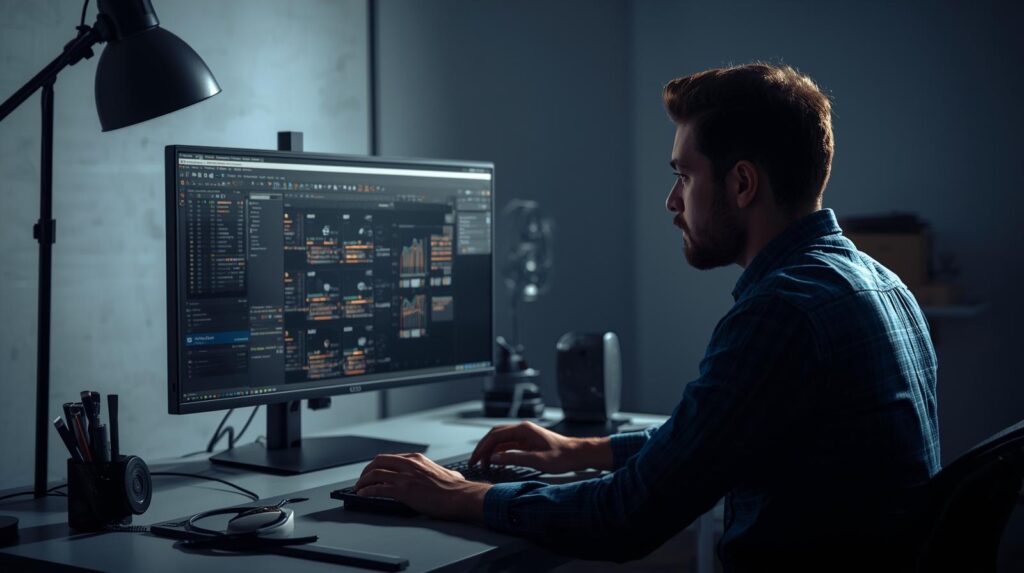A few years ago, I used to spend hours tweaking colors, adjusting shapes, and trying to align text just right.
Designing felt like a never-ending loop of “almost perfect.” But in 2025, AI tools have completely changed that story.
Today, design isn’t just about creativity — it’s about speed, consistency, and smart automation.
AI design tools now help creators like me go from idea to finished design in minutes, not hours.
After testing over 20 tools, here are the 7 AI design tools that actually saved me time — without killing creativity.

1. Canva AI — The Everyday Design Companion
Canva has always been the go-to tool for non-designers, but its Magic Studio AI update in 2025 turned it into a full creative assistant.
Now, you can describe what you want (“Create a minimalist poster about digital minimalism”) and Canva generates an editable design instantly.
Plus, the “Magic Eraser” and “Text-to-Image” tools are game changers for quick content creation.
Best for: Everyday creators, social media designers
Why I love it: Quick, intuitive, and surprisingly smart with brand consistency
2. Midjourney — The Artist’s AI Canvas
If you’ve ever wanted to turn imagination into visuals, Midjourney is still unmatched.
Its newest V7 model delivers hyper-realistic images that look like high-end concept art.
I use Midjourney for blog thumbnails and background images.
The detail and lighting it produces make even simple concepts look cinematic.
Best for: Concept art, YouTube thumbnails, creative visuals
Why I love it: Transforms vague ideas into visually stunning artwork
3. Figma AI — Smarter UI/UX Design
For web and app designers, Figma’s new AI assistant is a blessing.
It can auto-generate layout templates, color schemes, and even component variations based on your brand guidelines.
I tested it during a client project, and it built an entire homepage layout in under 10 minutes — all editable.
Best for: UX/UI designers and web creators
Why I love it: Cuts design time in half without compromising on flexibility
4. Adobe Firefly — Professional-Grade Image Generation
Adobe Firefly has come a long way since its beta phase.
It integrates directly with Photoshop and Illustrator, meaning you can generate assets inside your workflow — no need to jump between tools.
What stands out is content authenticity — every AI-generated image includes metadata for transparency, which clients love.
Best for: Professionals who need high-quality, commercial-safe images
Why I love it: Seamless integration with Adobe tools
5. Kittl — Vintage and Typography Master
If you’re into branding or merch design, Kittl is a hidden gem.
It specializes in typography, vintage logos, and print designs, combining AI assistance with creative control.
I created a logo for a side project in less than 15 minutes — something that would’ve taken me hours before.
Best for: Logo, print-on-demand, or merch creators
Why I love it: Perfect balance between AI help and manual creativity
6. Leonardo AI — The Designer’s Secret Weapon
This one feels like Midjourney meets Photoshop.
Leonardo AI lets you generate, edit, and layer AI images with control over lighting, perspective, and depth.
I use it for thumbnail art and cinematic images — the level of realism is insane.
Best for: AI illustrators, content creators, and cinematic artwork
Why I love it: Professional-grade outputs and fine control over generation
7. Runway ML — From Design to Motion
Sometimes, static images aren’t enough.
That’s where Runway ML shines — it transforms still designs into motion graphics or short videos automatically.
I’ve used it to turn Midjourney images into animated loops for YouTube intros.
Best for: Creators who want to add motion to visuals
Why I love it: Makes professional motion graphics accessible to anyone
Why AI Design Tools Are Game-Changers in 2025
AI design tools don’t replace creativity — they amplify it.
They take care of the tedious parts (resizing, background cleanup, text placement) and leave room for the fun part: creating.
The biggest shift I’ve seen is in speed and iteration.
Before AI, I’d make one version of a design per day. Now? I can test five variations in under an hour.
That’s not cheating — that’s evolution.
And it means creators can spend more time thinking and less time dragging pixels.
Final Thoughts
In 2025, design isn’t about mastering software — it’s about mastering ideas.
Tools like Canva AI, Midjourney, Figma, and Leonardo don’t replace designers; they give us superpowers.
Whether you’re a blogger, marketer, or digital artist, the key is the same:
Use AI to enhance your vision, not replace it.
Because in the end, what makes a great design isn’t the tool — it’s the mind behind it.